"Ebony Cabinet With Scenes From The Holy Family, XVIIth Century"
Large ebony cabinet richly carved with natural patterns and wavy moldings. This type of ebony cabinet is notably present in the castle of Ambleville but also in the museum of the castle of Fontainebleau or in the Louvre. It is the most emblematic piece of furniture from the first half of the 17th century. These few exceptional productions preserved at the castle of Serrant, in England or in Amsterdam are at the root of the term "cabinetmaker". Indeed, in the 17th century, carpenters from the Netherlands and sculpting ebony, this exotic and very expensive wood, settled in France. Our ebony cabinet is distinguished by the richness of its sculptures on the main leaves, but also on the sides and on the interior and exterior drawers. It is also remarkable for the complexity of the interior theater. Its austere and monochrome appearance contrasts and surprises with a lively, rich and colorful interior. The ornamental repertoire of this cabinet is fully in the French customs of the first half of the 17th century: foliage, cherubs and putti holding foliage and garlands of flowers particularly close to the art of sculptor Jacques Sarrazin as clarified by Valérie Carpentier, curator heritage at the Château de Fontainebleau. We also notice flowers and birds on the interior drawers as well as bouquets on the interior side of the two main leaves. This particularly celebrated engraving emphasizes the natural and the flowers, which corresponds to a growing interest in them in the 17th century with new exotic varieties imported and acclimatized to France. Opening with two drawers in its upper frieze carved with cherubs, foliage and floral motifs. On the facade, its two large leaves are carved with scenes taken from medallions. On the right, the biblical episode of the flight of the Holy Family in Egypt following the massacre of the Innocents by Herod. The original engraving is by François Perrier, co-founder of the Royal Academy of Painting and Sculpture, engraver and painter whose paintings are present in the collections of Louis XIV. On the left, the Nativity watched over by the angels, in the style of Michel Dorigny, engraver and painter who worked in particular for Queen Anne of Austria. Inside, the two small leaves engraved with monochrome landscapes representing the Garden of Eden with its winged cherubs. Open, they reveal a set of eleven drawers with ebony-veneered wavy moldings with a chiseled decoration of flowers, fruits, foliage and birds and framing two gates. The interior cabinet reveals a beautiful theater in satin veneer, amaranth, ebony, ivory and ivory tinted green. It consists of a copper balustrade at the top. The checkered floor in the foreground gives way to a second in perspective. At the back, a fine marquetry composed of ivory extends the perspective by a checkerboard to arrive at a portico framed by columns and overlooking a church in a landscape. On the ceiling, a first ivory half-rosette is taken from a larger second. On each side, two removable porticoes with twisted columns and surmounted by bronze capitals frame engraved figures. These two porticoes reveal six small secret drawers. A discreet zipper reveals a new inlaid top and adds to the complexity and elegance of this interior. The interior of the small leaves inlaid with wind roses. Although in the case of these ebony cabinets, attribution is a delicate exercise, the abundance and precision of the sculptures on the leaves, drawers and side panels and the complexity of the interior theater of this room suggest a prestigious commission. We note in particular that the copper balustrade of the theater evokes the cabinets of the Louvre, Fontainebleau as well as the cabinet of the castle of Serrant attributed to Pierre Gole. The lively and contrasting marquetry of this interior box also refers to the style of the latter, cabinetmaker to Louis XIV. Let us also add that the checkerboard of the back of the theater in perspective is also part of the criteria for attribution to Pierre Gole retained by Th. H. Lunsingh Scheurleer, art historian and specialist in Gole. French work from the 17th century. Usual restorations in particular in the funds as well as a small drawer. The twisted blackened wood base dates from the 17th century. Height: 159 cm Width: 137 cm Depth: 53 cm Bibliography: Secrets d'ébène by Valérie Carpentier, heritage curator at the Château de Fontainebleau. 


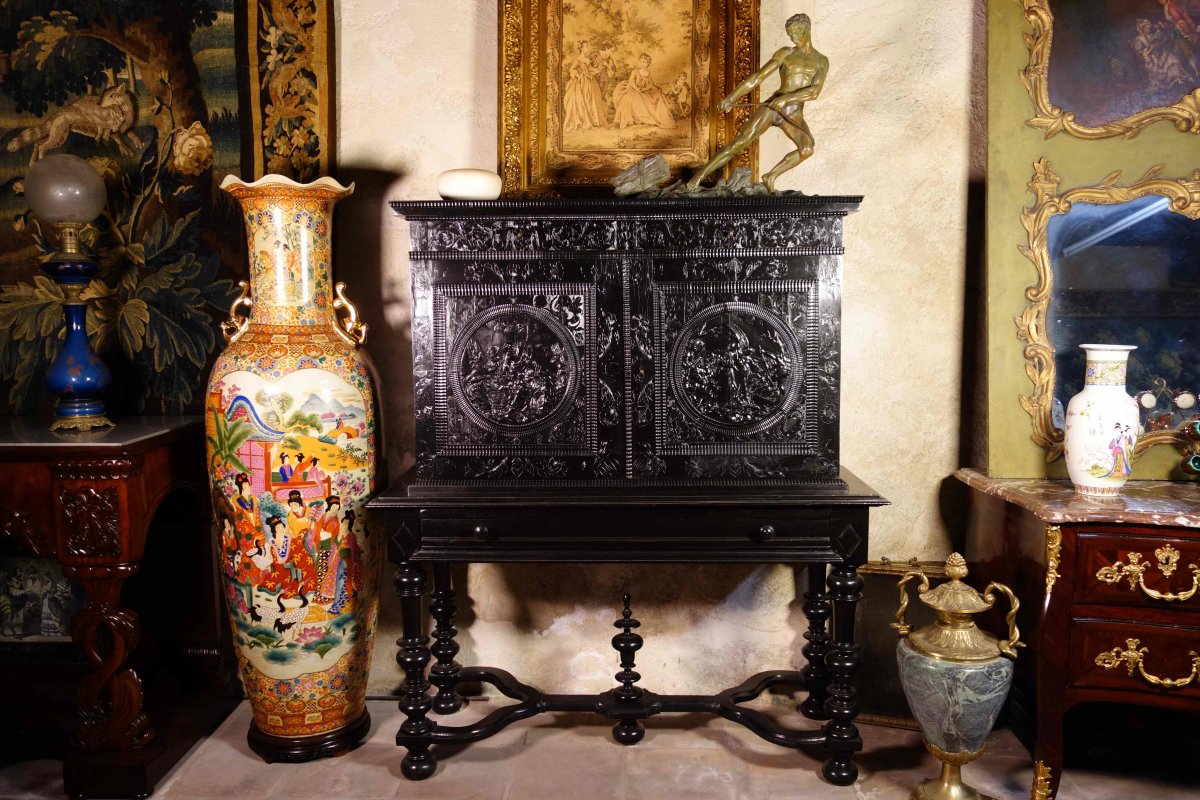

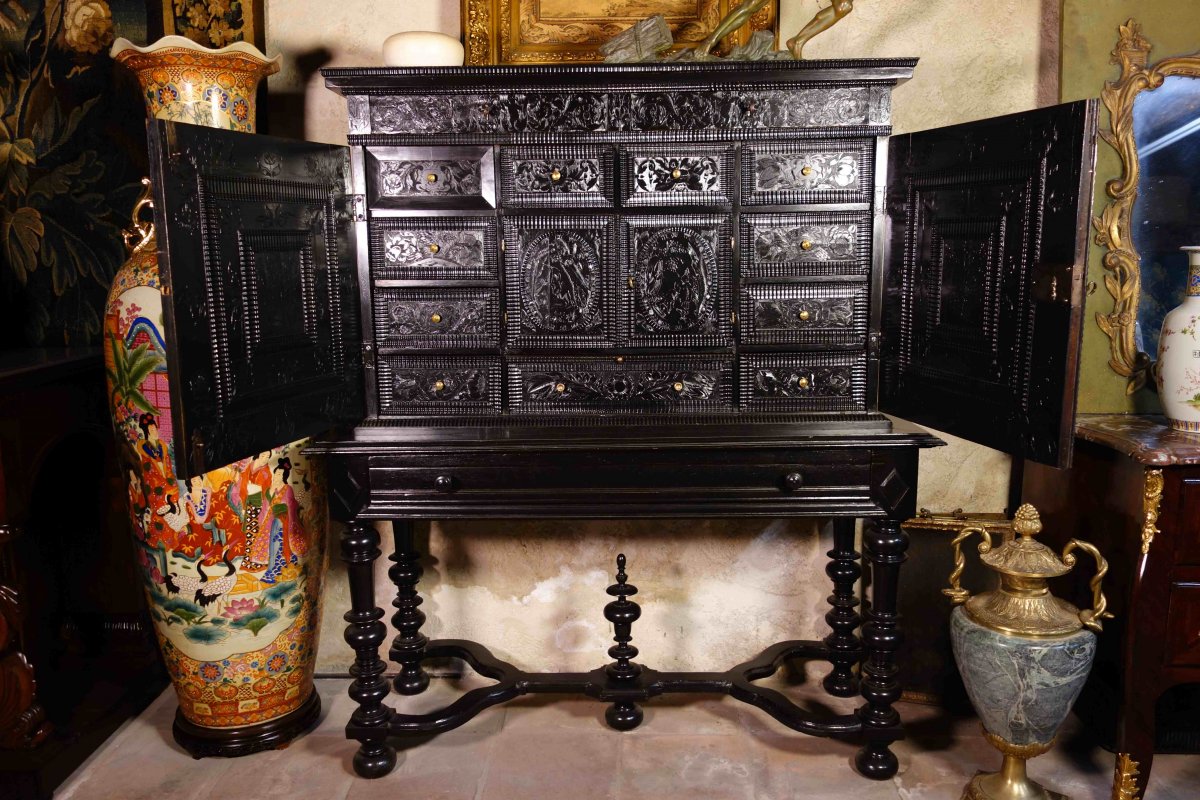


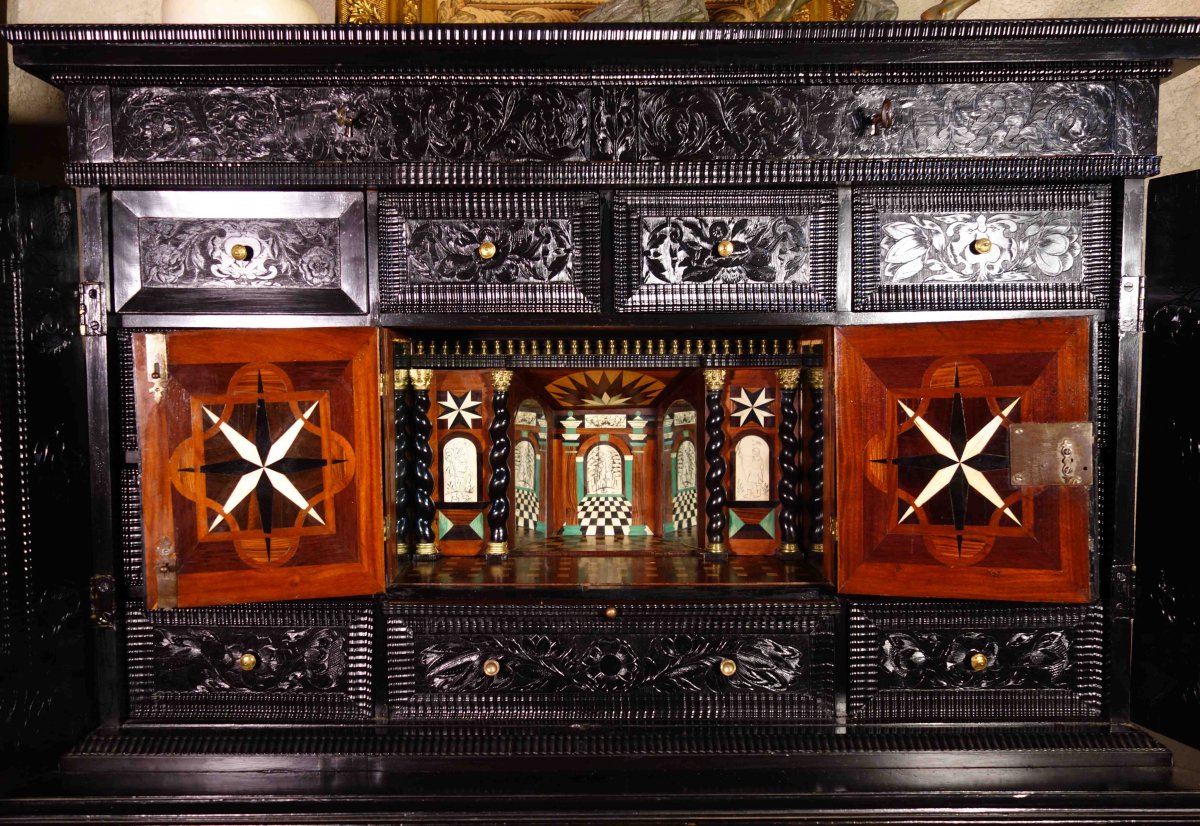
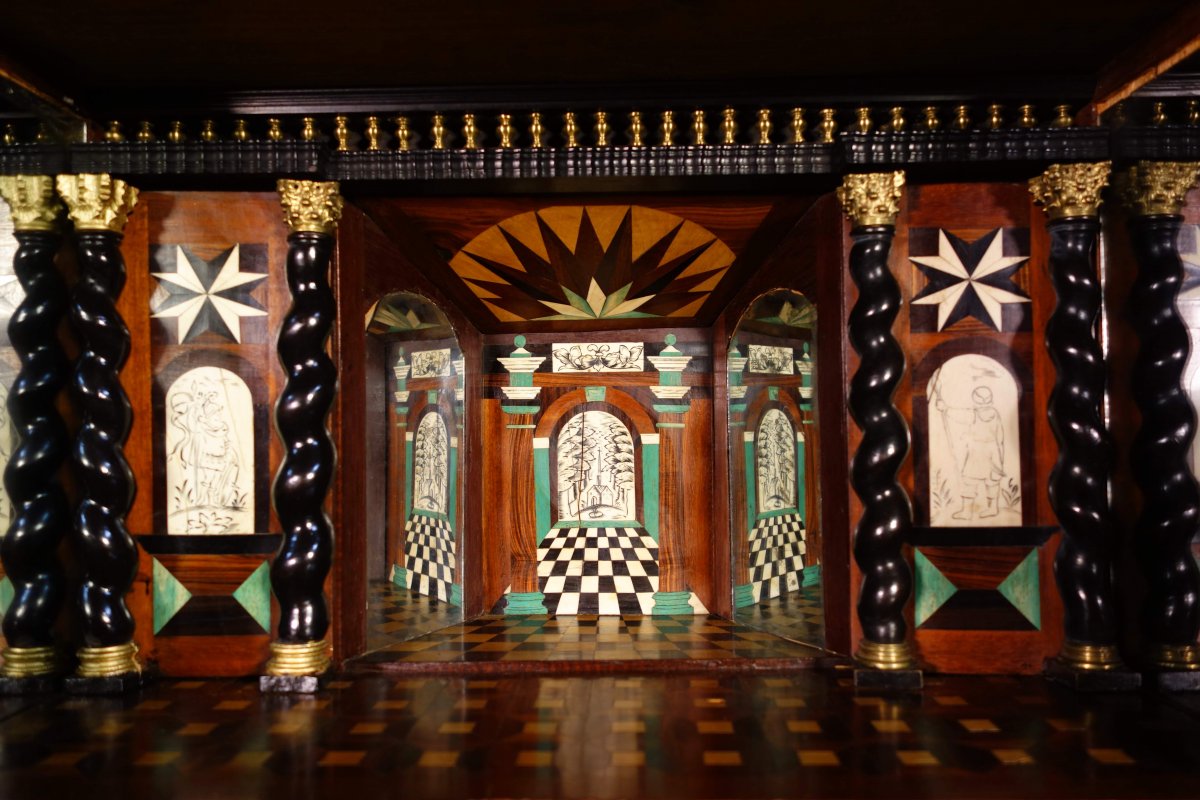

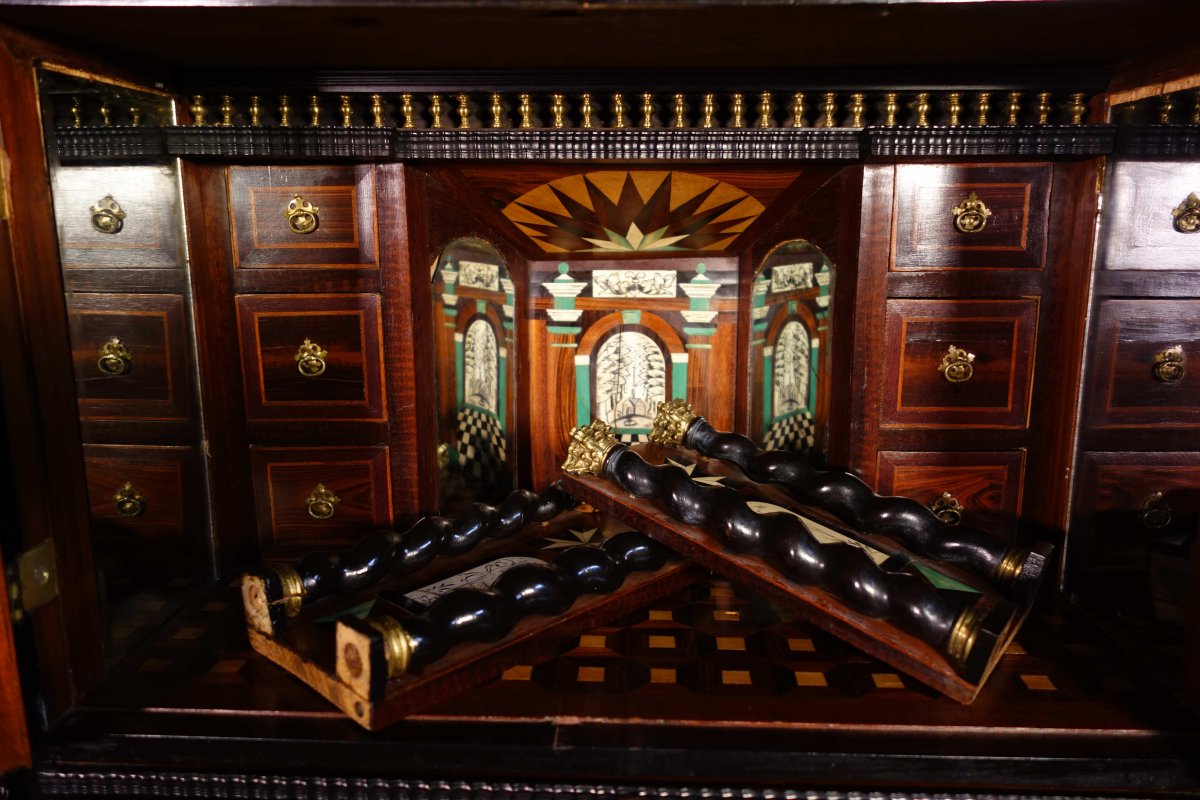
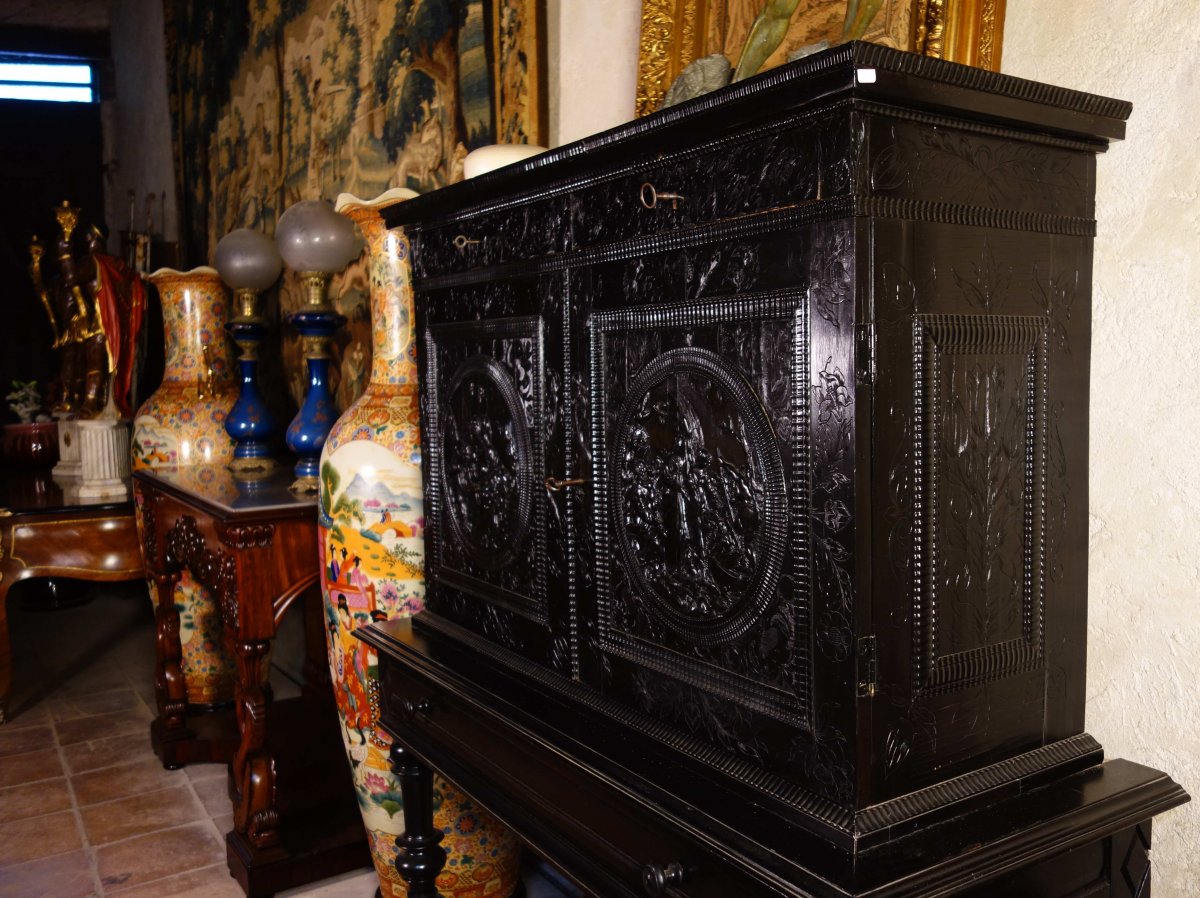



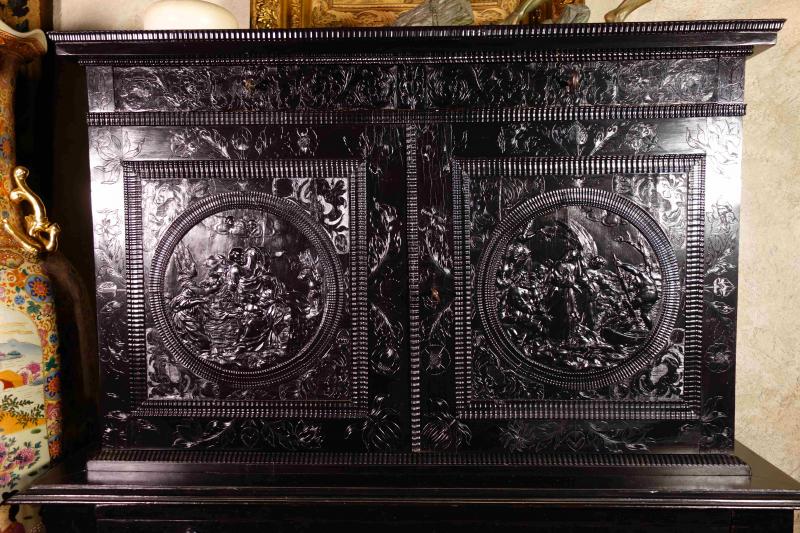

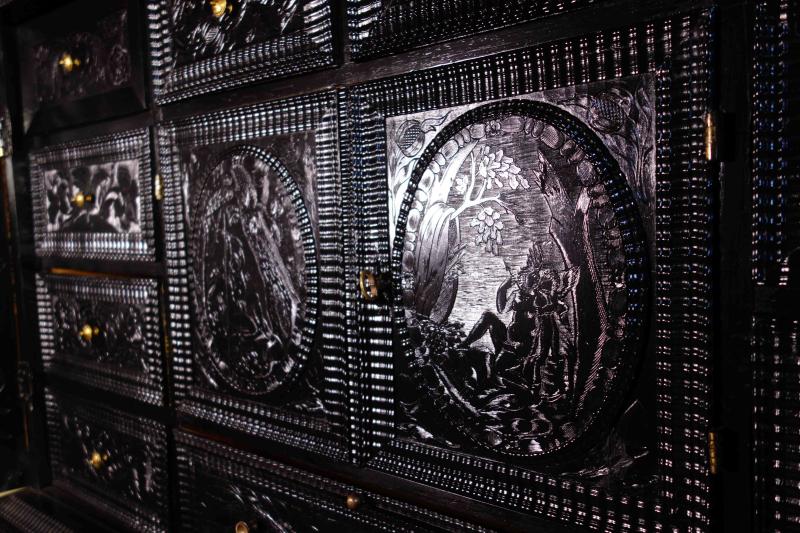
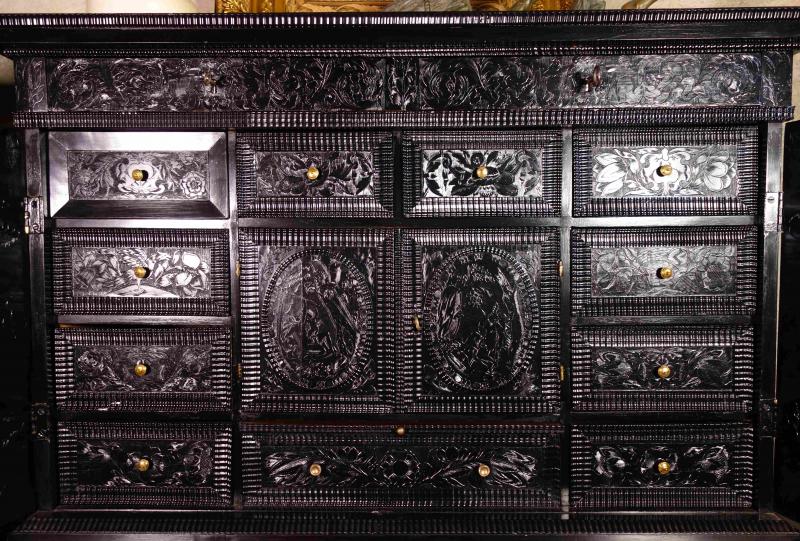









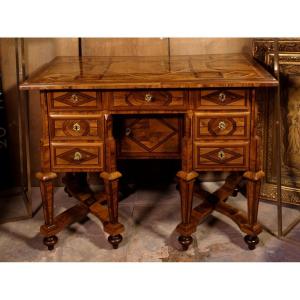
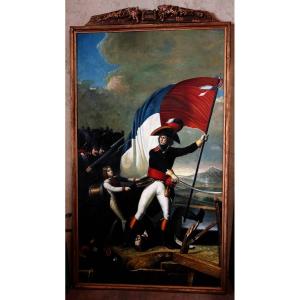
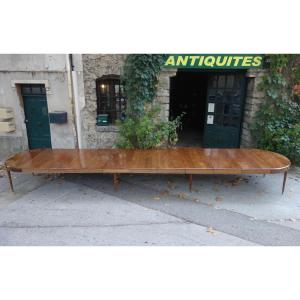
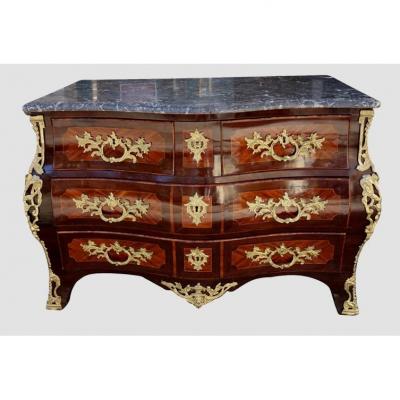

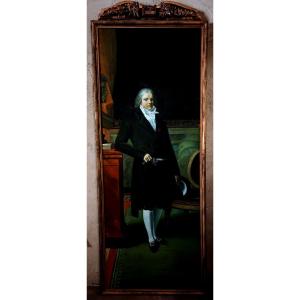
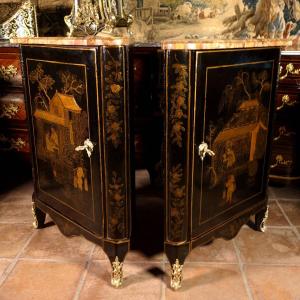

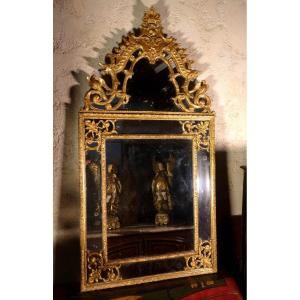
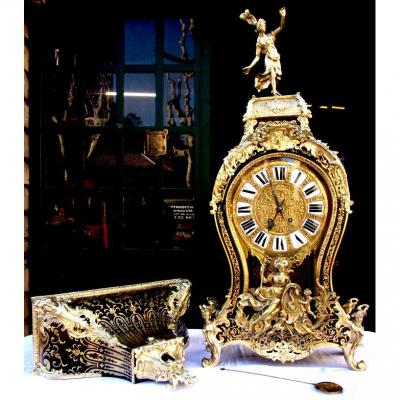

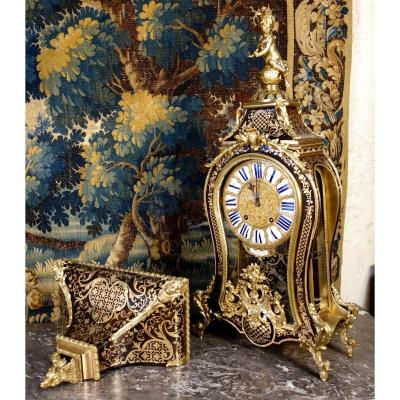

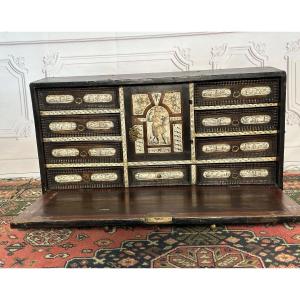


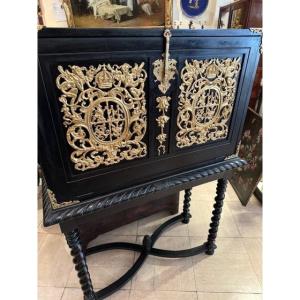
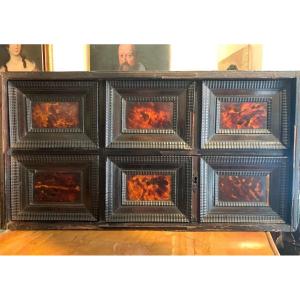




 Le Magazine
Le Magazine Rivista Artiquariato
Rivista Artiquariato TRÉSORS magazine
TRÉSORS magazine